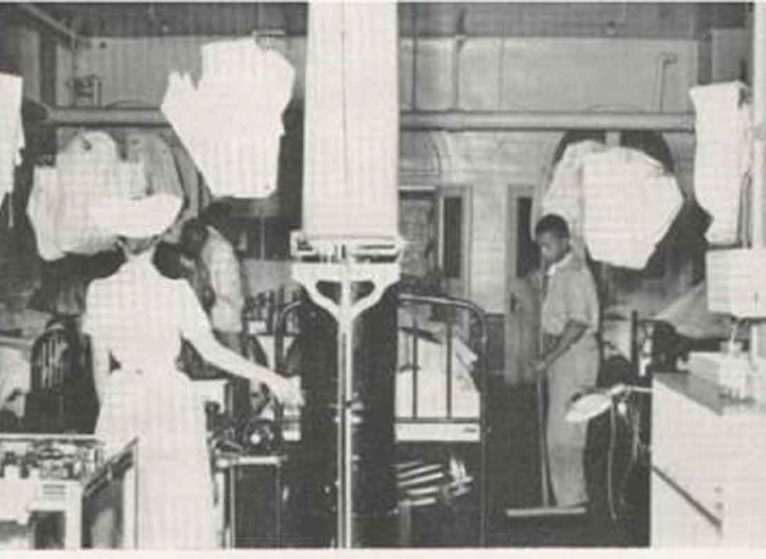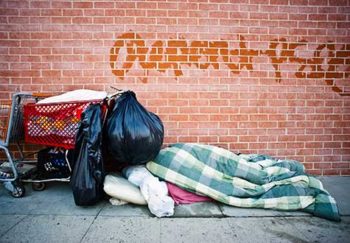To adequately cover the entire history of race and racism at UVA Health would take more than 1 hour. "But you have to start somewhere," says Dan Cavanaugh, Curator of Historical Collections at the Health Sciences Library. That 'somewhere' has taken shape as a 1-hour tour of the Medical Center’s West Complex. In the tour, Cavanaugh presents significant developments in the hospital's history of race between 1901 and 2000.
Cavanaugh's research covers patient segregation, discriminatory health care, labor discrimination, race science research, civil rights activism, IDEA initiatives, and urban renewal projects. But the point of the public tour, given in partnership with Diversity and Community Engagement Office, as part of Martin Luther King, Jr, week and Black History Month, was not to provide an exhaustive, definitive report. Instead, Cavanaugh explains, the effort aimed to "help participants understand how historical developments might continue to influence UVA Health and the organization’s relationship with the surrounding Charlottesville/Albemarle community."
The tour itself, which Cavanaugh has led both in-person and online, includes historical photos, quotes, and a lot of data. Many community members remember what it was like. Others might be surprised to discover that much of what we take for granted today only recently changed.
We asked Cavanaugh a few questions to get his personal reflections on the history of race and racism at UVA Health and the impact of sharing it.
Q: What was most surprising to you in your research?
I don't know if anything about this research has been truly surprising, but I can say that this work continues to humble me. As an archivist at UVA Health, I work to preserve resources that document this institution's rich and complex history. I need to develop an overall sense or framework of that history to do this job well. Each time I learn something new about the history of racism at UVA Health, it compels me to review and redevelop the interpretations of our institution's history that guide my work.
These instances of discovery and re-evaluation are personal. The research I conduct does not uncover anything new or unknown. As I said before, many people who attend the talks I give lived this history, and they know much of it better than I ever will. Also, much of what I present is the work of other researchers who have already gone down these paths. When I learn about something that should not have seemed so hidden, it affirms what many leaders and scholars from historically underrepresented groups have been saying for decades. Collectively, our institutions have not done enough to preserve and make accessible the critical resources that document the history of racism.
There has been a lot of progress locally and nationally. For example, Tori Tucker and the Eleanor Crowder Bjoring Center for Nursing Historical Inquiry are doing incredible work to highlight the history of the LPN education program at then-Burley High School. But, there is more work to do. I hope I am doing my part to improve how we document the history of racism at UVA Health, and I hope that I am providing support to others who are doing work in this area.
Dig in More
Explore the library's in-depth resource guides
Q: You've given this tour a few times. How have people received it?
Over the past few years, I have been giving presentations and tours about UVA Health's history of racism, and people's reactions to this story are varied. For some people I meet, part of the history is already known, because they or their families lived it. Frequently, audience members will afterward reach out to me and share brief stories of how they or their families experienced segregation and past racial discrimination at UVA Health as a patient or as an employee. Other people I have met admit they didn't know this story, and that knowledge of the history has helped them better understand how our institution has impacted our local community.
Even more people from our audiences ask what this history means for the present. How can historical knowledge inform how we work towards a better future for our community and organization?
Q. What is the key takeaway you hope to communicate?
For the people who lived this history or know it better than I do, I hope they leave these presentations knowing that I and others are working to ensure that the history of racism at UVA Health will be recognized and not forgotten.
For those just learning about UVA Health's history of racism, I hope that the presentations provide a better understanding of our complex history of racism and its relationship with the significant challenges we face today.
The History of Race & Racism at UVA Health: A Glimpse
Cavanaugh's tour covers several in-depth stories about the evolution of segregation and white supremacy at UVA Health. Here's just a glimpse or sample of the tour.
1951
In 1951, the local Black community and civil rights activists and hospital workers initiated a campaign to desegregate patient facilities at UVA hospital. It was one of the first NAACP actions against patient segregation in the country.
These basement wards housed Black patients in cramped, open rooms with exposed, leaking pipes and peeling paint. Many reports tell how Black patients would often ask to go home and die rather than stay in these conditions. The initiative eventually ended the use of the basement spaces.
1965
In 1965, the federal government insisted that UVA Health announce that it was finally desegregated. It had already been partially desegregated for years. But many workers didn't know this: Black workers still ate in previously segregated cafeterias.
1975
The UVA School of Medicine hired its first Black faculty member in 1975. Since to work as an attending doctor in the hospital you had to also hold a faculty position, it was common "not to see one Black doctor in the facility."
1995
In 1995, a report found an overrepresentation of black workers in the least-paying positions and an over-representation of white workers in the best-paying positions.
However, for certain job categories — technical, professional, and skilled crafts — "representation was actually close to what it should be, at about 15-20%," Cavanaugh says. He points to 1950, when that percentage was 0.
"I think what's going on here is that UVA actually has training programs and improvement programs in the Black community in these categories. I think this is an example that when institutions fund and support these kinds of programs, they tend to work."


